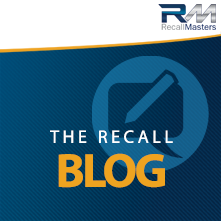Why are Consumers So Ambivalent About Bringing Recalled Vehicles into Your Dealership?
Why are Consumers So Ambivalent About Bringing Recalled Vehicles into Your Dealership?
There are currently more than 63 million recalled vehicles still on US roads and highways, which is surprising when you consider that recall repairs are at no cost to the consumer. So, why are consumers so apprehensive about bringing you their recalled vehicles? Do consumers hate going to the dealership that much?
A recent survey by the University of Michigan found that 38{25fe8d719f8aa7fee9d6d1ab25a6c722d6f7475fb64135bdf6c46b52738109f1} of consumers fail to complete recall repairs because they are fearful the dealership will pressure them into additional repairs or services. And, 37{25fe8d719f8aa7fee9d6d1ab25a6c722d6f7475fb64135bdf6c46b52738109f1} don’t take their vehicles in for recall repairs because of the difficulty involved in giving up their vehicles. Finally, 36{25fe8d719f8aa7fee9d6d1ab25a6c722d6f7475fb64135bdf6c46b52738109f1} felt the repair would take too long. It doesn’t appear that we’ve done a good enough job of persuading consumers that America’s dealerships are here to help.
These consumer fears seem to track well with the huge amount of recalled vehicles on our roads, versus the relatively small percentage of consumers who actually bring their vehicles in to get an outstanding recall repaired.
To overcome these challenges, one thing you can do is make it very clear in your messaging that your dealership is there to help vehicle owners. That you are only interested in completing the recall repair. In addition, ensure that your service department is set up to handle this unique customer when they do come in.
Yes, I know, service departments are designed to optimize revenue from every customer. And these recall customers can, in fact, be rather profitable due to additional repairs that are needed. But don’t lead with that. These customers have been inconvenienced with a faulty product they now have to bring in to get fixed. Some recalls come with a threat of danger if left unrepaired, which can be very upsetting to the customer. So, make sure everyone – from the receptionist to the service advisor – is trained in correctly handling this customer.
The best start is to simply apologize for any inconvenience the recall may have caused them. Remember, to the customer, your dealership is simply an extension of the OEM. Be smart about scheduling and make sure you have the parts in stock before scheduling the service appointment. If parts are simply not available, have a good explanation ready to sooth your customer. There’s nothing more frustrating to a consumer than to come to the dealership in attempt to get their recall repaired only to be told the parts are unavailable. Make sure that whoever schedules appointments knows which recall work has limited parts availability so they can coordinate with both parts and the service advisor to avoid irritating a customer.
If the recall repair will take a bit of time, provide loaner cars to recall repair customers, if possible. Loaner vehicles can give you a competitive advantage to help in winning that recall repair business. In fact, if your dealership has this service available, it would be wise to start including that messaging in all of your marketing and digital properties. You may be surprised at how far people are willing to drive to get their recall work done with you. Most consumers want their vehicles to be safe. If you can solve this difficulty for them, you could start conquesting your competitor’s service customers.
On the flip side, the survey also asked what would make these customers come in for a recall repair. 52{25fe8d719f8aa7fee9d6d1ab25a6c722d6f7475fb64135bdf6c46b52738109f1} of respondents replied the ability to bundle a recall repair with regularly scheduled maintenance. And 51{25fe8d719f8aa7fee9d6d1ab25a6c722d6f7475fb64135bdf6c46b52738109f1} said that a free oil change or tank of gas would be enough.
Perhaps you should consider identifying recall repairs that are lucrative enough to include an oil change or tank of gas and use that in your marketing, and/or identify customers that need recall repairs who are also due for maintenance, and reach out to them.
While vehicle owners are in possession of the recalled vehicles, it is in fact dealerships and the manufacturers who own the problem and the massive risk that each recalled vehicle presents. There should be no debate about how important recall repairs are. This is a problem that extends beyond the billions of dollars in product liability lawsuits – it is about saving lives and restoring consumers’ perception of the automotive industry.
It’s up to all of us to create the kind of conditions and incentives that compel consumers to bring those recalled vehicles into dealerships. Whatever the investment your dealership makes in a comprehensive recall program, it is likely falling short of the estimated opportunity. Are you getting your share of the 63 million recalled vehicles in your service lane? If not, then it’s time to sharpen those pencils again.


